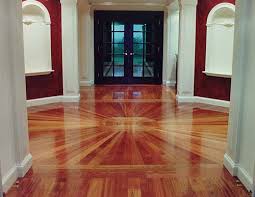<p><img class="alignnone size-full wp-image-1289" src="https://medusamagazine.com/wp-content/uploads/2013/05/wooden-florring.jpg" alt="wooden florring" width="255" height="197" />f</p>
<p>Despite the increasing use of synthetic and less costly alternatives to home improvement materials, some conventional options remain the more preferred and highly regarded components. One such example is wooden flooring.</p>
<p>Although a variety of floor coverings are now available, many buyers still prefer flooring made of or imitating the look of timber. Timbered flooring instantly adds warmth and sheer elegance to any residence, and the grain effect renders a homey atmosphere that is always welcoming.</p>
<p>Of course, even timber strips or panels have a variety of different options now. One of these is engineered wood. How is engineered wood different from the solid wood, then?</p>
<p><b><i>Composition</i></b></p>
<p>As the name suggests, solid wood flooring is typically a ¾ inch-thick strip of pure timber. A number of manufacturers sell wood flooring in different dimensions or thicknesses, but all of these options are made of a single piece of solid lumber cut out from a tree. They may already be finished or not, and they are available in virtually every variety of wood.</p>
<p>Engineered wood flooring materials are composed of at least 3 layers of timber, each of which sandwiches a hard or soft variety of plywood. These are laid so that the grains of each layer are oriented cross-wise, which makes the strip stronger. Some types of engineered wood can have as many as 12 layers, although 5 is the usual quantity. Since engineered flooring is not wood through and through, it is less susceptible to shrinking or expanding, making it a more stable material.</p>
<p><b><i>Maintenance</i></b></p>
<p>Both types of floorings require similar cleaning or polishing techniques. This is because the surfaces of engineered wood are still made of real wood, although only on the top layer, which is quite thin. These surfaces can be sanded and buffed only so much. Sooner or later, the surface will thin out, so it may need replacing in 5 years or so. The good thing, though, is that its top layer is usually laminated or pre-finished already, eliminating the need to have it sanded and sealed.</p>
<p>This is not the case for solid wood flooring. It can come without finish and without pre-sealing, but you can have solid wood flooring sanded for an unlimited number of times without worrying about thinning.</p>
<p><b><i>Longevity</i></b></p>
<p>Engineered floors last for a long time, depending on the kind you buy. Some can last under 10 years, but others with thicker layers can last up to 40.</p>
<p>Solid wooden flooring may last up to 100 years or more, especially when maintained properly.</p>
<p><b><i>Installation</i></b></p>
<p>Both kinds have tongue-and-groove sides that allow you to latch them together. With the engineered option, the process of clicking each strip together in place is quick and easy, and since this type is already pre-finished, you can use it as soon as you finish laying the strips on your floors.</p>
<p>With solid wood, you will typically need to have the flooring professionally installed, adding to the cost, though if you have sufficient DIY expertise, you may prefer to install the floors yourself. You will also need to leave a gap on the perimeter of your room in order give it space to expand and contract. If the wood strips don’t have a polished finish, you will need to have the panels sanded and polished before you are able to use the area.</p>
<p>Engineered wood flooring can be more expensive than the solid timber types, depending on the composition, top layer thickness, and quality. For either option, be sure to consider not just the cost of the flooring itself, but of the installation, preparation for use, and maintenance.</p>
<p>Arian is the writer and guest blogger and is affiliated with NJ Flooring Outlet, a company specializing in Discount Wood Flooring NJ.</p>
<p> ;</p>

Solid vs. Engineered Wood Flooring: 4 Distinct Differences
